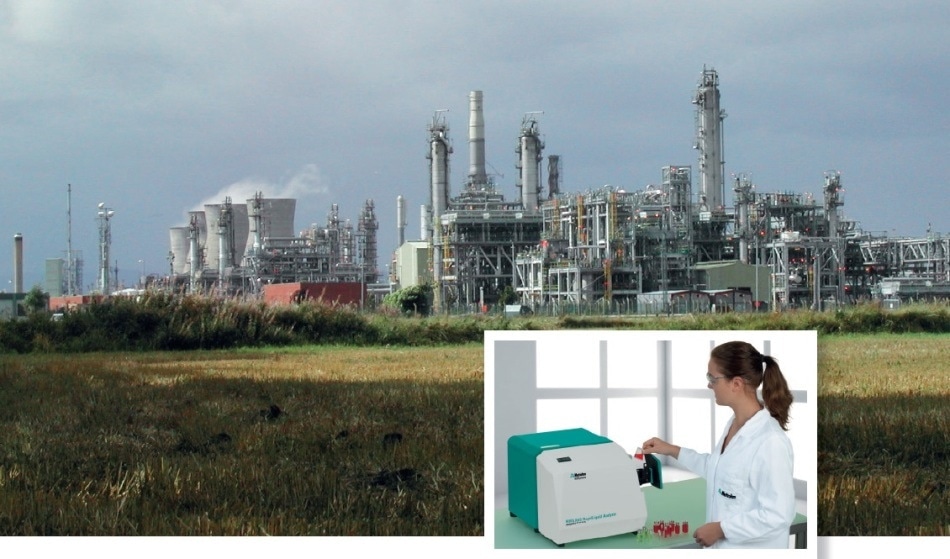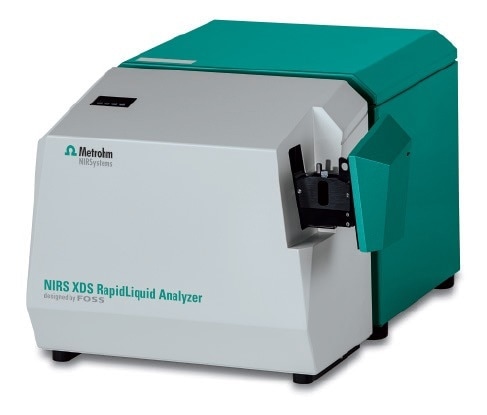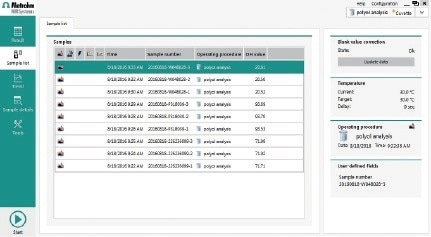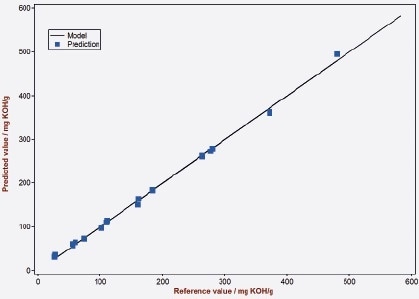Metrohm provides a turnkey solution for routine analysis of polyols using near-infrared spectroscopy (NIRS). This solution is based on a pre-calibration model and a dedicated spectral database and allows manufacturers in the chemical industry to lower the cost of their daily routine analysis while improving their product quality.

Polyols are widely used in chemical manufacturing. A key quality parameter of polyols is the hydroxyl number. This parameter is still frequently determined in the laboratory by time consuming wet chemical analysis and involves complex sample preparation.
NIRS on the other hand requires neither chemicals nor hardly any sample preparation. It provides results within a minute and can be used by even inexperienced non-chemists.
In addition, with just a single measurement, multiple physical and chemical parameters can be determined at the same time. Due to the combined benefits of this technology, NIRS has become the method of choice for process analysis and a large number of daily QA/QC measurements.
Easy-to-use
- Turnkey solution
- No expertise required
- Measure at the push of a button
Fast
- Analysis results within one minute
- No sample preparation
- More than 15 minutes time saving compared to reference methods
Cost minimizing
- No reagents, no solvents
- No waste disposal
Clean
- Minimum impact on health and environment
- Non-destructive, chemical-free method
Turnkey Solution for Polyol Analysis
The Metrohm solution for polyols comes with a ready-to-use pre-calibration model for determining the hydroxyl number. Thanks to this pre-calibration, the Metrohm solution can be used as a starter model without any method development.

Reliable Results from Day One
The robust pre-calibration model enables accurate and precise determination of the hydroxyl value with exceptional reproducibility. The performance of the pre-calibration can be further enhanced by selecting a smaller calibration range or by augmenting it with user specific samples.
| Range of OH value in mg KOH/g |
SECV in mg KOH/g |
R2 |
| 0–600 |
3.9 |
0.998 |
Straightforward and Intuitive Operation
Vision Air software controls the Metrohm instruments for Vis-NIR. The software offers two environments that are customized to meet users’ requirements: Vision Air Manager enables authorized and experienced users to control data and carry out instrument configurations, while Vision Air routine facilitates secure day-to-day operation by routine users. For routine analysis, measurements can be carried out with just two simple clicks.

Customized Service and Support
Metrohm supports users by updating the default pre-calibration on demand with customer specific samples. This in turn improves the performance of the method and/or extends it to new applications. Such updates are effortlessly carried out in the Vision Air Manager Network mode.
When using Vision Air Network, all instruments within a global customer network can be synchronized at the push of button. Customer specific calibrations can be effortlessly developed for the determination of more quality parameters of polyols, for example water content, acid number, isocyanate content and iodine value or unique components like diethylene glycol.


This information has been sourced, reviewed and adapted from materials provided by Metrohm AG.
For more information on this source, please visit Metrohm AG.